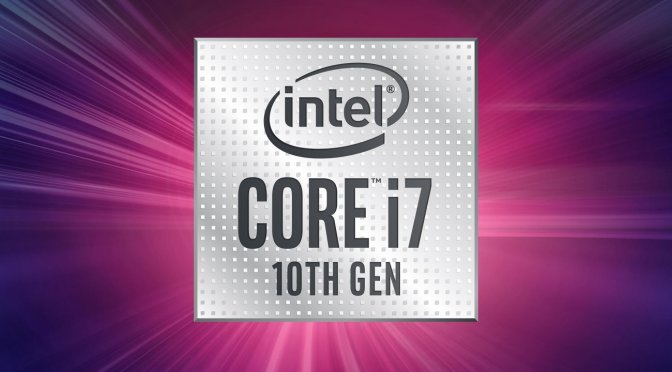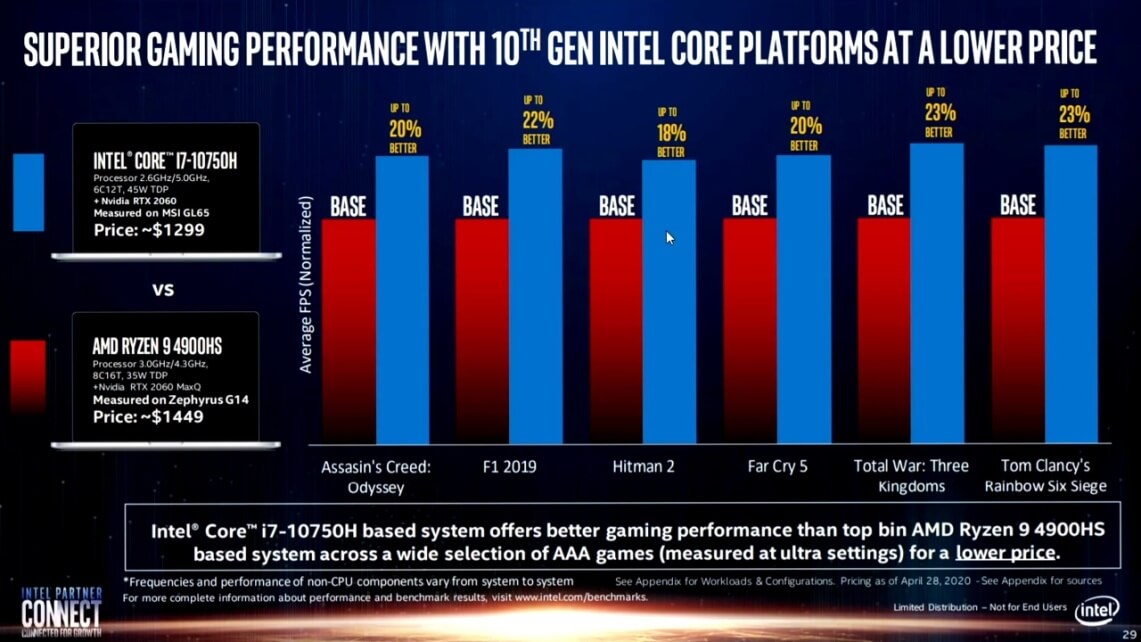According to some leaked internal marketing slides from INTEL coming via _rogame on twitter, it has come to our attention that Intel has made some very bold claims with regards to the gaming performance of their notebooks equipped with the Core i7-H and similar mobile processors.
Intel has also compared two different laptop GPU SKUs which seems to be an unfair comparison, because both the NVIDIA GeForce RTX 2060 (Max-Q mobile) and the RTX 2060 Max-P GPUs are not similar in performance.
The simplest way to think about Max-P is that it’s not Max-Q. Think of it as just the full power version. The P stands for “Performance”, so Max-Performance graphics means the GPU is capable of running at its maximum power limit and can provide, well, maximum performance. Max-P is less of an officially used term; at least it doesn’t have its own dedicated information page on the Nvidia website like Max-Q does! Max-Q on the other hand is a cut down version of the mobile GPU with a lower power limit. It won’t perform as good as a Max-P variant, which runs at the top end of the power limit range. This generally allows Max-Q graphics to exist in thinner and lighter machines.
As evident from the ‘Intel partner connect’ leaked slides, the company claims that Intel’s own 10th Gen Core processor system is almost “18-23 percent” faster at gaming than AMD’s Ryzen 4000 Renoir system. Intel has compared two different notebooks, one with a 45-Watt Core i7-10750H processor, and the other with a 35-Watt AMD Ryzen 9 4900HS processor.
According to Intel’s internal testing, the notebook equipped with the Core i7-10750H CPU offers an overall better gaming performance than AMD’s Ryzen 9 4900HS laptop. The AMD Ryzen 4900HS is a 35W processor being exclusively used only by ASUS. The ASUS G14 ROG Zephyrus has been considered by AMD as the flagship model and it was used for marketing the product during the “Renoir” mobile launch. But both the CPU and GPU power is limited, and it also uses the “Max-Q” 65W variant of the GeForce RTX 2060 GPU. Unlike the full 90W variant GPU, this “max-q” model has the boost clock limited to 1185 MHz.
On the other hand, we have the Core i7-10750H notebook (the MSI GL65), which is a 15-inch laptop featuring a 45W CPU and a 90W “Max-P” variant of the RTX 2060 GPU. This card runs at 1560 MHz in boost mode, which is much higher than the ASUS G14’s max-q graphics processor. Intel claims the MSI laptop/system is much better in some of the AAA games tested than the ASUS notebook, and according to their testing done on Ultra settings, MSI system is faster in games by almost 18-20% margin! The MSI GL65 also seems to be 150 USD cheaper than the G14 laptop. This obviously is not a fair comparison, and INTEL could have easily used the full 95 Watts RTX 2060 variant, but they didn’t.
What are your thoughts on this ?
Hello, my name is NICK Richardson. I’m an avid PC and tech fan since the good old days of RIVA TNT2, and 3DFX interactive “Voodoo” gaming cards. I love playing mostly First-person shooters, and I’m a die-hard fan of this FPS genre, since the good ‘old Doom and Wolfenstein days.
MUSIC has always been my passion/roots, but I started gaming “casually” when I was young on Nvidia’s GeForce3 series of cards. I’m by no means an avid or a hardcore gamer though, but I just love stuff related to the PC, Games, and technology in general. I’ve been involved with many indie Metal bands worldwide, and have helped them promote their albums in record labels. I’m a very broad-minded down to earth guy. MUSIC is my inner expression, and soul.
Contact: Email


